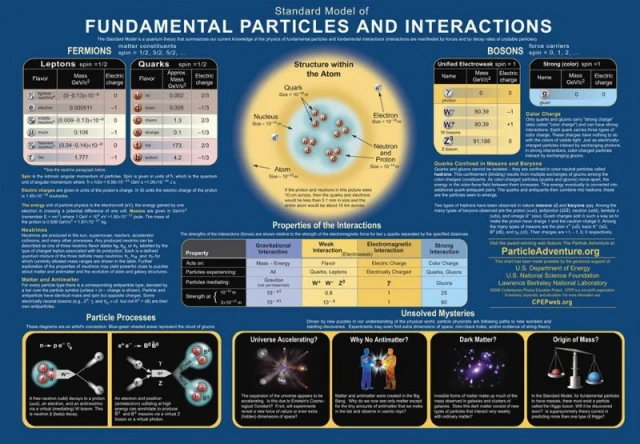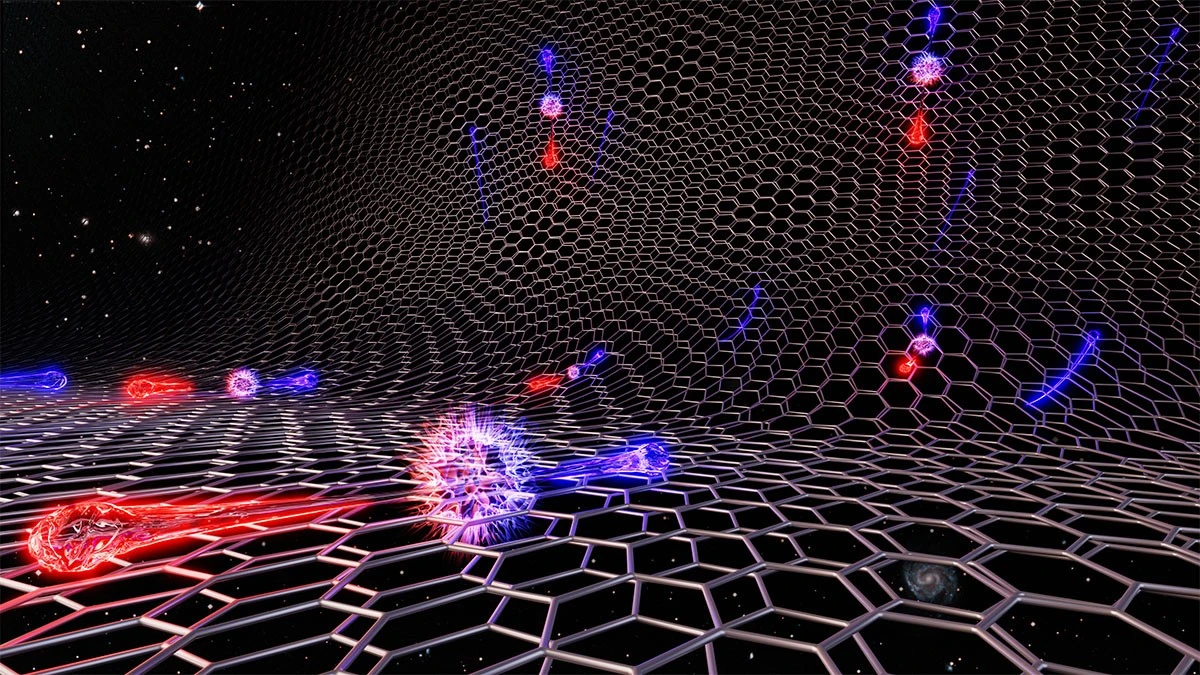In our common experience, you can't get something for nothing. In the quantum realm, something really can emerge from nothing.
Whoever said, “You can’t get something from nothing” must never have learned quantum physics. As long as you have empty space — the ultimate in physical nothingness — simply manipulating it in the right way will inevitably cause something to emerge. Collide two particles in the abyss of empty space, and sometimes additional particle-antiparticle pairs emerge. Take a meson and try to rip the quark away from the antiquark, and a new set of particle-antiparticle pairs will get pulled out of the empty space between them. And in theory, a strong enough electromagnetic field can rip particles and antiparticles out of the vacuum itself, even without any initial particles or antiparticles at all.
Previously, it was thought that the highest particle energies of all would be needed to produce these effects: the kind only obtainable at high-energy particle physics experiments or in extreme astrophysical environments. But in early 2022, strong enough electric fields were created in a simple laboratory setup leveraging the unique properties of graphene, enabling the spontaneous creation of particle-antiparticle pairs from nothing at all. The prediction that this should be possible is 70 years old: dating back to one of the founders of quantum field theory, Julian Schwinger. The Schwinger effect is now verified, and teaches us how the Universe truly makes something from nothing.

This chart of particles and interactions details how the particles of the Standard Model interact according to the three fundamental forces that Quantum Field Theory describes. When gravity is added into the mix, we obtain the observable Universe that we see, with the laws, parameters, and constants that we know of governing it. Mysteries, such as dark matter and dark energy, still remain.
In the Universe we inhabit, it’s truly impossible to create “nothing” in any sort of satisfactory way. Everything that exists, down at a fundamental level, can be decomposed into individual entities — quanta — that cannot be broken down further. These elementary particles include quarks, electrons, the electron’s heavier cousins (muons and taus), neutrinos, as well as all of their antimatter counterparts, plus photons, gluons, and the heavy bosons: the W+, W-, Z0, and the Higgs. If you take all of them away, however, the “empty space” that remains isn’t quite empty in many physical senses.
For one, even in the absence of particles, quantum fields remain. Just as we cannot take the laws of physics away from the Universe, we cannot take the quantum fields that permeate the Universe away from it.
For another, no matter how far away we move any sources of matter, there are two long-range forces whose effects will still remain: electromagnetism and gravitation. While we can make clever setups that ensure that the electromagnetic field strength in a region is zero, we cannot do that for gravitation; space cannot be “entirely emptied” in any real sense in this regard.
But even for the electromagnetic force — even if you completely zero out the electric and magnetic fields within a region of space — there’s an experiment you can perform to demonstrate that empty space isn’t truly empty. Even if you create a perfect vacuum, devoid of all particles and antiparticles of all types, where the electric and magnetic fields are zero, there’s clearly something that’s present in this region of what a physicist might call, from a physical perspective, “maximum nothingness.”
All you need to do is place a set of parallel conducting plates in this region of space. Whereas you might expect that the only force they’d experience between them would be gravity, set by their mutual gravitational attraction, what actually winds up happening is that the plates attract by a much greater amount than gravity predicts.
This physical phenomenon is known as the Casimir effect, and was demonstrated to be true by Steve Lamoreaux in 1996: 48 years after it was calculated and proposed by Hendrik Casimir.
Similarly, in 1951, Julian Schwinger, already a co-founder of the quantum field theory that describes electrons and the electromagnetic force, gave a complete theoretical description of how matter could be created from nothing: simply by applying a strong electric field. Although others had proposed the idea back in the 1930s, including Fritz Sauter, Werner Heisenberg, and Hans Euler, Schwinger himself did the heavy lifting to quantify precisely under what conditions this effect should emerge, and henceforth it’s been primarily known as the Schwinger effect.
Normally, we expect there to be quantum fluctuations in empty space: excitations of any and all quantum fields that may be present. The Heisenberg uncertainty principle dictates that certain quantities cannot be known in tandem to arbitrary precision, and that includes things like:
- energy and time,
- position and momentum,
- orientation and angular momentum,
- voltage and free electric charge,
- as well as electric field and electric polarization density.
While we normally express the uncertainty principle in terms of the first two entities, alone, the other applications can have consequences that are equally profound.
Recall that, for any force that exists, we can describe that force in terms of a field: where the force experienced by a particle is its charge multiplied by some property of the field. If a particle passes through a region of space where the field is non-zero, it can experience a force, depending on its charge and (sometimes) its motion. The stronger the field, the greater the force, and the stronger the field, the greater the amount of “field energy” exists in that particular region of space.
Even in purely empty space, and even in the absence of external fields, there will still be some non-zero amount of field energy that exists in any such region of space. If there are quantum fields everywhere, then simply by Heisenberg’s uncertainty principle, for any duration of time that we choose to measure this region over, there will be an inherently uncertain amount of energy present within that region during that time period.
The shorter the time period we’re looking at, the greater the uncertainty in the amount of energy in that region. Applying this to all allowable quantum states, we can begin to visualize the fluctuating fields, as well as fluctuating particle-antiparticle pairs, that pop in-and-out of existence due to all of the Universe’s quantum forces.
 Reviewed by Explore With Us
on
November 04, 2022
Rating:
Reviewed by Explore With Us
on
November 04, 2022
Rating:








No comments: